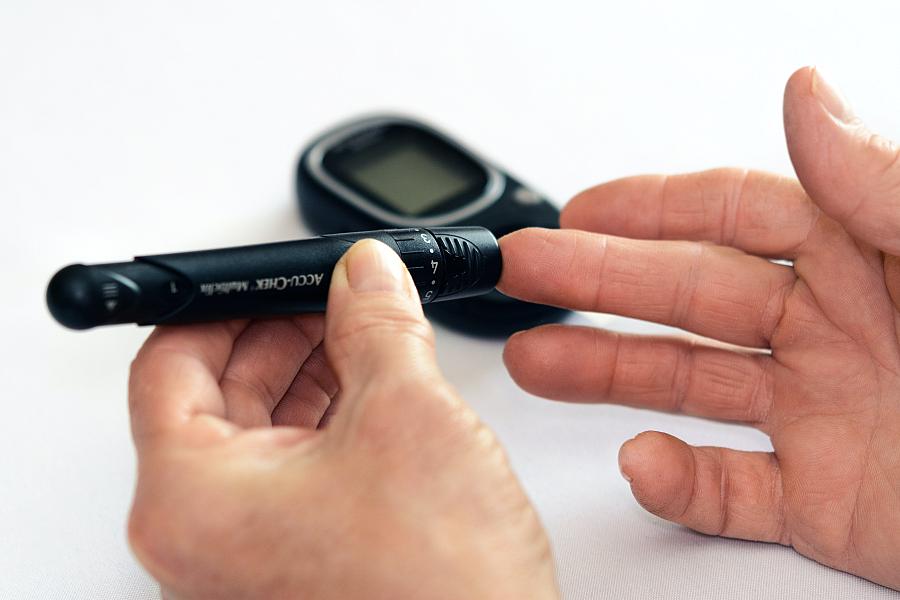Hispanic children with Type 2 diabetes suffer long-term health complications and barriers to treatment in South Texas

(Photo: PhotoMIX Company via Pexel)
Before anyone had ever heard of COVID-19, alarm bells sounded in South Texas over the growing public health crisis of childhood Type 2 diabetes in the Hispanic community. Today, there is already research that shows that the incidence of Type 2 diabetes has doubled during the pandemic.
During the lockdown phase of the pandemic, life for many became more sedentary: school campuses were closed, children’s lives were severely disrupted, and access to healthy foods was limited for many households. These are all conditions that have deleterious effects on the health of children and adolescents already living with or susceptible to Type 2 diabetes.
New research reveals that people who had COVID-19 were 31% to 166% more likely to develop diabetes than people who never got the disease, according to research from the U.S. Centers for Disease Control and Prevention in the January 14, 2022 Morbidity and Mortality Weekly Report.
San Antonio has continued to see an increase in childhood Type 2 diabetes and the age of diagnosis is getting younger each year. More significantly, a child with Type 2 diabetes will likely suffer at least one major complication within 15 years of being diagnosed, according to research published in the New England Journal of Medicine and conducted by The University of Texas Health Science Center at San Antonio and University Health’s Texas Diabetes Institute. These men and women who are in their 20s are developing diabetes complications, including hypertension, kidney disease, and eye disease — complications that doctors normally see in patients in their 50s and 60s.
Our project, supported by the 2022 Impact Fund for Reporting on Health Equity and Health Systems, focuses on the ways in which the pandemic exposes health inequities among Hispanic youth living in San Antonio’s West Side. They are increasingly vulnerable to the grip Type 2 diabetes because of the ways the pandemic perpetuates a lack of access to health care and information. Moreover, we offer that this lack of health equity can expose them to long-term, irremediable health issues.
The story we frequently hear about the Mexican American population and the problem of Type 2 diabetes blames the victim and points to cultural lifestyle as the culprit. Those casting blame say that those with diabetes suffer because they are unable to control their diet and are reluctant to exercise. This overlooks the fact that diabetes is a chronic condition caused by a multitude of factors that are outside the control of patients and their families.
According to the CDC, one out of every 10 people in the U.S. has Type 2 diabetes and a third of the population has prediabetes. But in San Antonio those numbers are significantly higher, with one in seven people having diabetes. The city also has the highest diabetes-related amputation rates in the nation. Approximately 1,500 San Antonio residents each year have a limb amputated because of diabetes, and most are Hispanic.
The Hispanic community in San Antonio is especially vulnerable to the ravages of Type 2 diabetes. They have a genetic predisposition for diabetes, the standard American diet is linked to Type 2 diabetes, and they live in Texas, which has the highest percentage of people without health insurance in the United States.
There are multiple treatment barriers for those dealing with high rates of childhood Type 2 diabetes. Recent studies find that uninsured rates remain high among Hispanics, even when income and employment are considered. Lack of coverage limits access to needed health care and leads many individuals to forgo care altogether. In a health system dominated by employer-based coverage, Hispanics lack health insurance primarily because they work for employers that do not offer coverage, or are in jobs not covered by their firm’s health plan. Furthermore, Texas has not expanded Medicaid under the Affordable Care Act.
Many communities also lack opportunities for exercise. Low-income neighborhoods in South Texas frequently have little access to sidewalks, parks and other spaces that facilitate outdoor play.
There's no cure for Type 2 diabetes and there is a lack of approved medications for children under 18 diagnosed with Type 2 diabetes. Only insulin and metformin are approved for children under 10. A diagnosis brings instructions on how to manage one’s diabetes, but in the last two years, during the pandemic, that’s become much more difficult.
Through our research and reporting, we will explore the lives of Mexican American families in San Antonio who live with childhood Type 2 diabetes and tell their stories. We will seek to illustrate the challenges, successes, and disappointments these families are facing. We will also be working with researchers doing work on San Antonio’s West Side, an area historically home to working class Mexican Americans, a medically underserved population.
Through our project, we aim to amplify this information in the heart of the communities most at-risk. We will produce a radio documentary in English and Spanish that will air in San Antonio on public radio, and on commercial radio stations in San Antonio and throughout South Texas and the border. We will also create content for the web and a Spanish-language newsletter.
We hope our focus on Hispanic children and adolescents in San Antonio’s West Side can serve as a model for journalists seeking to expose the various barriers to health equity.


